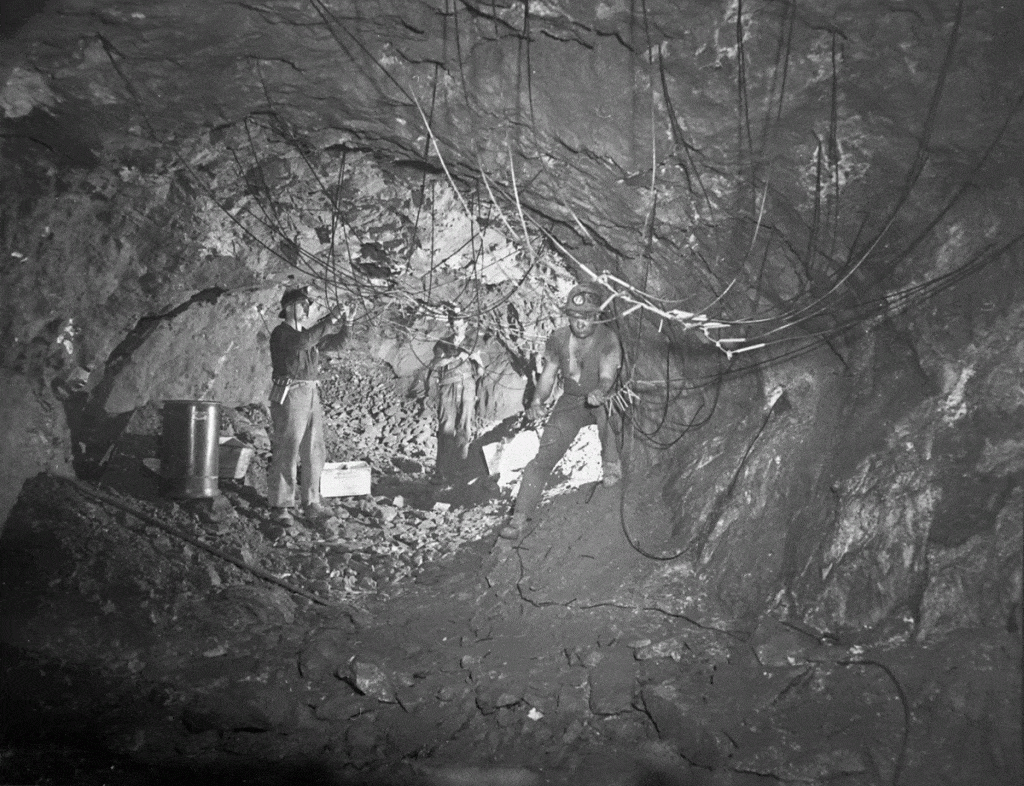In Park City’s first century, its fame was based on mining, not skiing. And it was most famous for being the nation’s second largest silver strike (behind Nevada’s Comstock Lode), although other minerals like lead, zinc and copper were also abundant and valuable. But one mine, and only one, was a prolific gold producer.
At the eastern edge of the Park City Mining District, running roughly from the base of Deer Valley’s Mayflower lift out to Highway 40, lay the underground workings of the Mayflower Mine. Besides its rich veins of gold, the Mayflower had another different characteristic from other local mines. Both the rock and water which trickled through the ground registered at 149 degrees. The Mayflower was hot, wet and full of gold. Altogether during the mining years, Park City produced 45 tons of gold, most of it from the Mayflower.

Credit: Park City Museum, Jordanelle Special Service District Collection
This Mayflower Mine is not to be confused with an earlier Mayflower Mine—the one discovered by Thomas Kearns, who built a fortune from it, leading him to become a U.S. Senator from Utah and owner and publisher of the Salt Lake Tribune. Kearns merged that Mayflower and other claims into the Silver King Mining Company with his partners.
The Mayflower Mines Corporation formed in 1929. More than 200 miners worked above and below ground from then through the late 1950s, although employment and profits varied based on metals prices. By the late ‘50s, with profits and production declining, the mine company switched to a “miner’s lease” operation, in which the company and the miners agreed to a split of sales proceeds. The miner’s lease allowed the company to spread the risk of mining in difficult financial times, paying miner’s a percentage of what they actually produced.
By 1961 a new operator came into the picture: Hecla Mining based in Northern Idaho. They cancelled the miner’s lease and invested heavily in modernization, spending $650,000 to build a new mill to process ore. They also installed a 240-ton cooling unit, replacing an older ventilation system relying on cooler fresh air from the outside.
As Hecla tunneled into new deposits, production increased and by 1966 the U.S. Bureau of Mines reported the Mayflower as the United States sixth biggest gold producer. By 1972, with gold veins playing out, the Mayflower was sold to investors for resort development. But not until this summer has a development group begun work on the surface, readying the ground for the new Mayflower Resort.
On October 2, the Park City Museum hosts Park City mining veteran and geologist Keith Droste for a lecture about Park City’s only gold mine. Droste worked for Hecla Mining and evaluated the Mayflower before Hecla entered into its lease of the property. Droste, who has 64 years in the mining business all over the world, was the Mayflower’s Superintendent from 1966 to 1969.
His lecture “Hot, Wet, Payable Gold: The Mayflower Mine” starts at 5 p.m. at the Park City Museum’s Education & Collection Center on 2079 Sidewinder Drive.